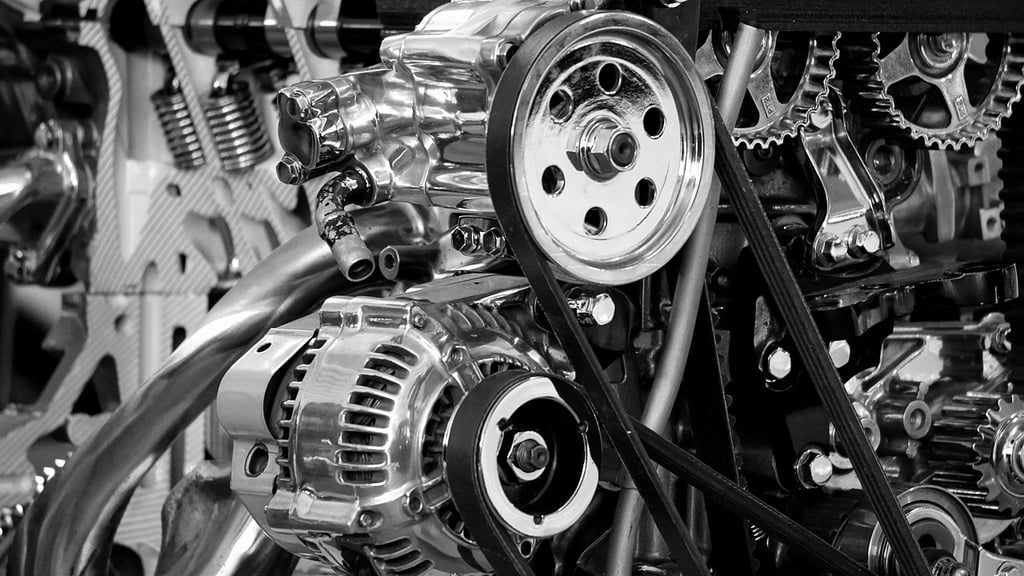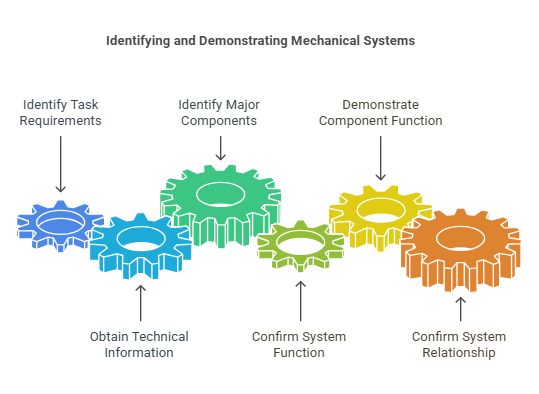Understanding the Requirements for Identifying Automotive Mechanical Systems and Components
Posted by SkillMaker in Mar, 2025
What is a concise description of the task requirements when identifying automotive mechanical systems and components?

Identifying automotive mechanical systems and components involves accurately recognising and describing the function and interaction of various parts within a vehicle. This includes understanding their configurations and the operational principles underlying automotive systems such as engines, transmissions, braking, and electrical systems.
Listen to this article as a podcast
Why do people in the Automotive industry need to identify automotive mechanical systems and components?
The ability to identify automotive mechanical systems and components is crucial for automotive professionals to perform diagnostics, maintenance, and repairs accurately and efficiently. This knowledge ensures that technicians can pinpoint issues, optimise vehicle performance, enhance safety standards, and contribute to customer satisfaction through quality service delivery.
“Understanding and identifying automotive systems is fundamental to maintaining quality and reliability in vehicle performance and safety.”
What are the key components or elements of identifying automotive mechanical systems and components?
Key components include:
- Engine Systems: Identifying components like pistons, crankshafts, and camshafts.
- Transmission Systems: Differentiating between manual and automatic systems and their parts.
- Brake Systems: Recognising components such as discs, drums, and brake lines.
- Suspension Systems: Understanding coil springs, shock absorbers, and control arms.
- Electrical Systems: Identifying batteries, alternators, starters, and wiring harnesses.
What key terms, with descriptions, relate to identifying automotive mechanical systems and components?

Registered Trademark®
- OEM (Original Equipment Manufacturer): Refers to the original parts or devices made by the car’s manufacturer.
- Aftermarket Parts: Components manufactured by companies other than the original maker of the vehicle.
- Diagnostics: Process of identifying and understanding issues within a vehicle’s systems.
- Torque: A measure of the force that can cause an object to rotate about an axis.
- Chassis: The frame on which the body and engines of a vehicle are built.
Who is typically engaged with operating or implementing the identification of automotive mechanical systems?
Automotive technicians, mechanics, and service advisors are usually engaged in the task of identifying automotive mechanical systems and components. These professionals require a comprehensive understanding to conduct repairs, provide expert advice, and ensure quality service.
How does identifying automotive mechanical systems and components align or integrate with other components of the Automotive industry in Australia?

This task is fundamental in the automotive repair and maintenance sectors, underpinning the standards of vehicle diagnostics, workshop operations, and customer service across the industry. It supports the broader supply chain, influencing parts suppliers and manufacturers by informing product development and sales.
Where can the student go to find out more information about identifying automotive mechanical systems and components?
What job roles would be knowledgeable about identifying automotive mechanical systems and components?
Knowledgeable roles include:
- Automotive Technicians
- Motor Mechanics
- Service Advisors
- Parts Interpreters
- Technical Engineers
What is identifying automotive mechanical systems and components like in relation to sports, family, or schools?

In sports, just as a coach identifies player roles and skills to formulate a strategy, identifying automotive systems ensures a team (workshop) operates smoothly for optimal performance. In a family, like understanding each member’s role for harmonious living, recognising each vehicle part’s function ensures smooth operation. In schools, akin to curriculum planning, thorough knowledge of systems and parts guides effective teaching and learning experiences in automotive courses.
(The first edition of this post was generated by AI to provide affordable education and insights to a learner-hungry world. The author will edit, endorse, and update it with additional rich learning content.)
(Skillmaker – 2025)

 Post Tagged with
Post Tagged with